
Karen Delahaut, formerly UW-Madison Fresh Market Vegetable Program
Revised: 1/12/2005
Item number: XHT1137
The common asparagus beetle (Criocercis asparagi) and spotted asparagus beetle (Crioceris duodecimpunctata) are annual pests of asparagus in Wisconsin. The common asparagus beetle is the more prevalent of the two species and the only one that causes economic damage to asparagus in Wisconsin.
Appearance: The adult common asparagus beetle is bluish-brown with cream-colored spots. The spotted asparagus beetle is orange with black spots. Both beetles are approximately ¼ inch in length. Larvae of both asparagus beetles are slug-like, and cream-colored or grey with dark heads.
Symptoms and Effects: Adults of the common asparagus beetle feed on asparagus spears and ferns. Feeding disfigures spears, rendering them unmarketable. Eggs laid on the spears also make them unmarketable. Defoliation of plants can occur if large populations of asparagus beetles are left unchecked.
Life Cycle: Both common and spotted asparagus beetles overwinter as adults in soil or mulch. Adults can be active as soon as asparagus plants emerge in the spring. However, the spotted asparagus beetle becomes active later in the spring than the common asparagus beetle. The common asparagus beetle lays eggs in rows on emerging spears and ferns, while the spotted asparagus beetle lays eggs only on the ferns. When eggs hatch, the slug-like larvae migrate to the tips of the ferns where they begin feeding on the foliage. Spotted asparagus beetles feed only on asparagus fruits, not on the ferns. Larval feeding continues for 10 to 14 days at which time, larvae migrate to the soil and pupate. Larvae and adults tend to be more active in the afternoon when the temperature and sunlight are greatest.
Control: Scouting for asparagus beetles and their damage is important in controlling this pest. Monitor plants in the afternoon when beetles are most active. Examine 100 crowns for the presence of beetles or eggs. Economic thresholds for plants monitored during the afternoon are indicated in the table below. If you monitor during the morning hours you should reduce your treatment threshold to account for the lower activity level of the beetles at this time of day. To achieve significant control, you should control adults early in the season before they lay eggs.
| Lifestage | Threshold |
| Adults | 5-10% of plants infested |
| Eggs | 2% of spears with eggs |
| Larvae | 50-75% of plants infested |
| Defoliation | 10% of plants defoliated |
Destruction of crop residues will eliminate overwintering sites for asparagus beetles. In addition, there is a tiny parasitic wasp (Tetrastichus asparagi) that is an egg parasite of the common asparagus beetle. This wasp is capable of reducing common asparagus beetle populations by up to 70%. If insecticides are needed to reduce beetle populations to below threshold levels, then spot treat areas where threshold levels have been exceeded. Keep in mind that new plantings tolerate less injury than older stands.
For more information on asparagus beetles: See Commercial Vegetable Production in Wisconsin (2024).
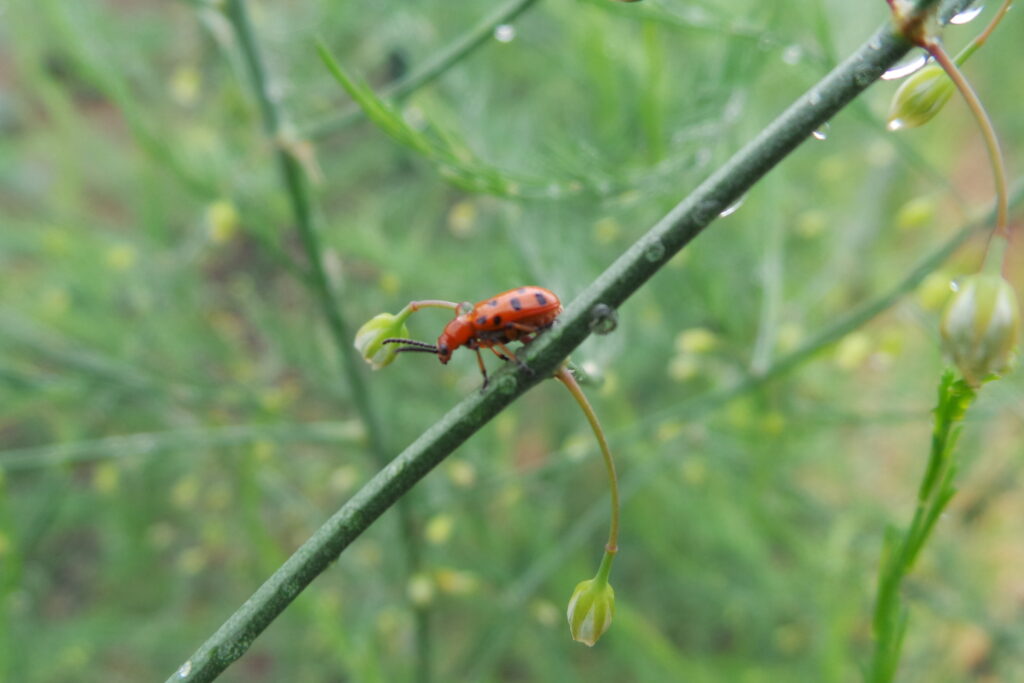
Download Article





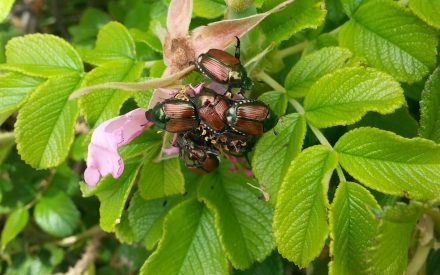 Japanese Beetle
Japanese Beetle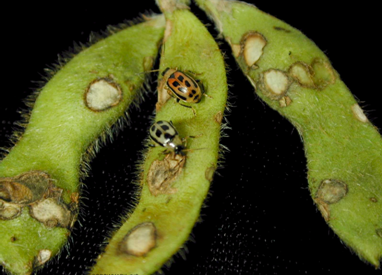 Bean Leaf Beetle
Bean Leaf Beetle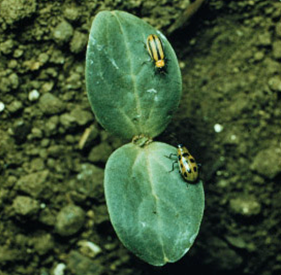 Cucumber Beetles
Cucumber Beetles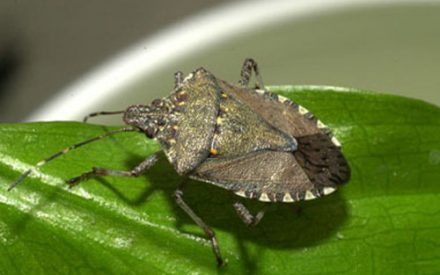 Brown Marmorated Stink Bug
Brown Marmorated Stink Bug


